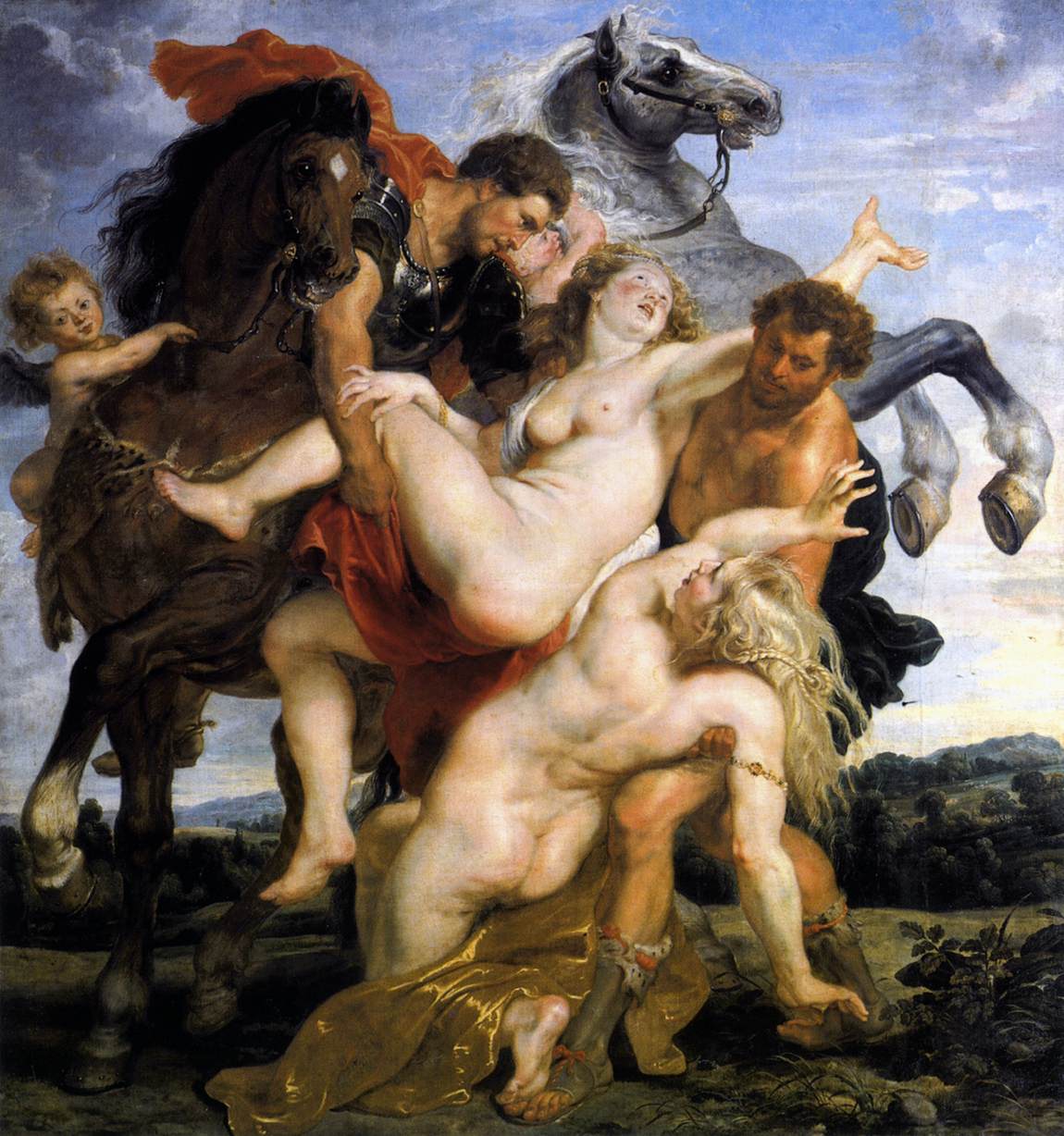Paintings by Peter Paul Rubens, the international gentleman from Antwerp, in many ways define the Baroque style. They are dynamic in composition and subject matter. The Rape of the Daughters of Leucippus has this classic combination. It depicts a story taken from Ovid: when Zeus and Leda’s sons, Castor and Pollux, abduct the mortal daughters of King Leucippus. The muscular men, reminiscent of Michelangelo’s bulky figures, capture the two young, fleshy and pink maidens whose arms flail in different directions as their garments fall to the ground.
The horses, the men, and the women form a tangled mass that threatens to spill out from the painting into the viewer’s space. This is choreographed chaos; the excitement is almost audible yet the figures move with such grace that they appear to be floating under water. And then there is the beautiful blue sky and vast landscape in the background.
Because mythological subjects appealed to courtly circles, one art historian hypothesized that Rubens created this painting for an aristocrat who wanted to celebrate the double marriage of Louis XIII of France and his sister Elisabeth to the young Philip IV of Spain and his sister Anne, all of whom were between the ages of eleven and fifteen.
In Europe at the time, aristocrats commissioned imagery of rape and abductions to symbolize absolute sovereignty. It’s alarming but true that someone conceivably could have commissioned Rubens to paint this subject as an allegory for a political marriage.
Recommended Reading


